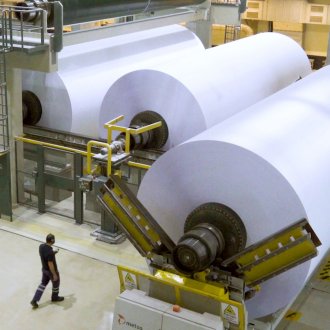
 Production of pulp and paper in Europe experienced a decline in 2023 due to several compounding external factors: a poor economic environment, destocking, and still high energy costs.
Production of pulp and paper in Europe experienced a decline in 2023 due to several compounding external factors: a poor economic environment, destocking, and still high energy costs.
Feb 13, 2024 - Suffering from an adverse macro-economic context, production of pulp and paper in Europe has experienced a decline in 2023. It was due to several compounding external factors: a poor economic environment, destocking and still high energy costs, as shown by the Confederation of European Paper Industries (Cepi) preliminary statistics report published today.
With mid-term global economic trends impacting the demand for paper and board and exacerbating destocking, consumption fell by 15.3% in 2023 and, in turn, production in the paper and board industry suffered a second consecutive year of contraction, decreasing by 12.8%. After a year 2022 marked by sky high energy prices, the decrease in production in 2023 continues to be more pronounced even than it was during the Covid-19 crisis (-4.7% in 2020).
These global trends have been worsened by the comparative high costs in Europe for production inputs, and notably energy, which cost continues to be unsustainably high. This is illustrated by Europe's domestic paper and board production contracting more than in many other world regions, where decreases ranged between -2% and -10%. But, in a globalized low demand context, both imports and exports diminished equally, and Europe's pulp and paper's trade balance remains by far positive, as it is one of the top EU manufacturing sectors by this measure.
Traditionally an engine for growth in the sector, the production of packaging paper and board in Europe has also continued on a downward trend, with consumption decreasing by 12.2%. The segment has suffered from a slowdown in retail and e-commerce figures having reverted back from pandemic levels. This in turn impacted the consumption of paper for recycling (-7.3%), as paper-based packaging in Europe is predominantly made of recycled material.
Graphic paper, which includes printing and writing paper, saw consumption drastically decrease (-27.5%). This can only partly be explained by longstanding trends towards more digital content, as destocking effects could possibly account for up to half of the decline. Within this category the book sub-segment remained resilient.
Sanitary and household paper also appeared much more stable than other segments, with a limited decline of -3.7%. These are still benefiting from societal trends favorable towards hygiene products, with 'at home' markets including tissues and toilet paper performing better than 'away-from-home' markets, more impacted by inflation and sluggish private consumption.
Finally, Europe's pulp production also declined less steeply than overall paper production, by 7.5%. The decrease in the production of this 'processed wood', which is the primary raw material for making paper and board, is to be attributed to a high number of closures of graphic paper mills which were also producing pulp. The production of market pulp grew by 4.8% in 2023 as capacities went full speed and benefited from a strong demand from China.
Download Cepi's Preliminary Statistics Report for 2023 (4-page PDF with charts and graphs).
Cepi is a Brussels-based non-profit organisation representing the European pulp and paper industry. Through its 18 national associations, Cepi gathers 490 companies operating 885 pulp and paper mills across Europe producing paper, cardboard, pulp and other bio-based products.
SOURCE: Cepi
Paper Industry Newsletter
Stay on top of paper industry news
from around the world with
PaperAge's free weekly newsletter.
Delivered every Thursday.
Sign up today!